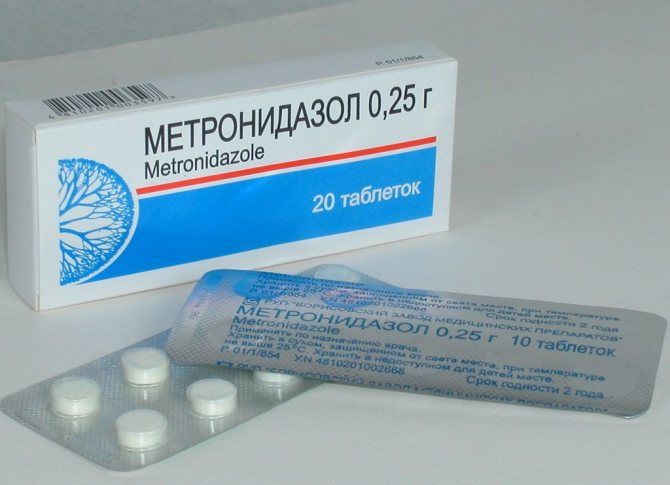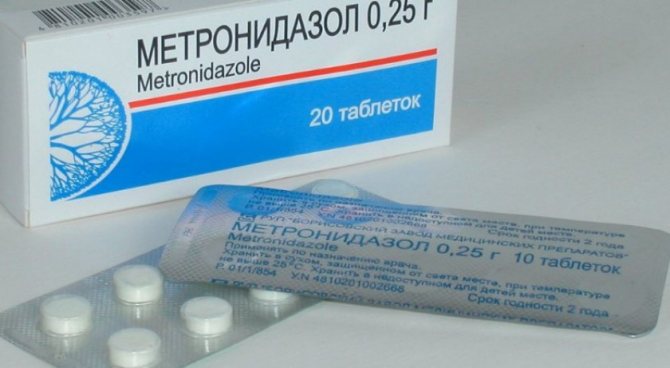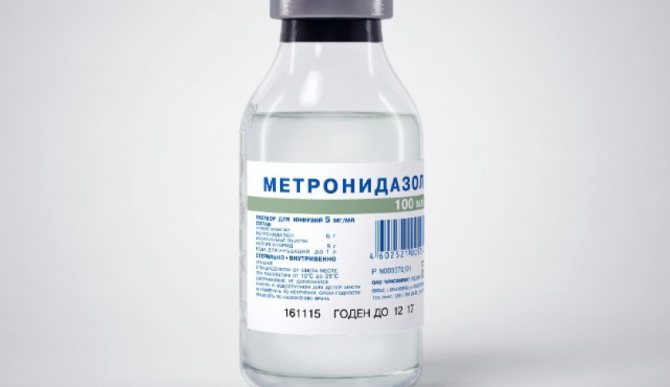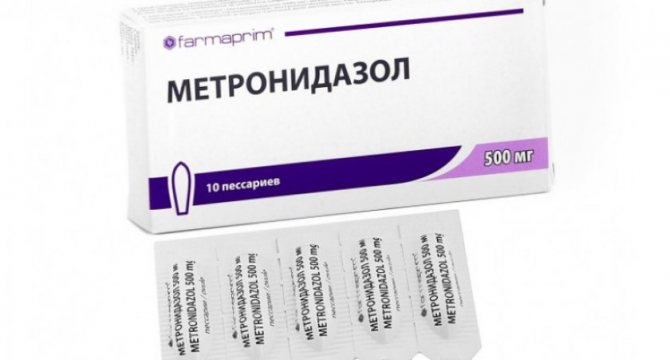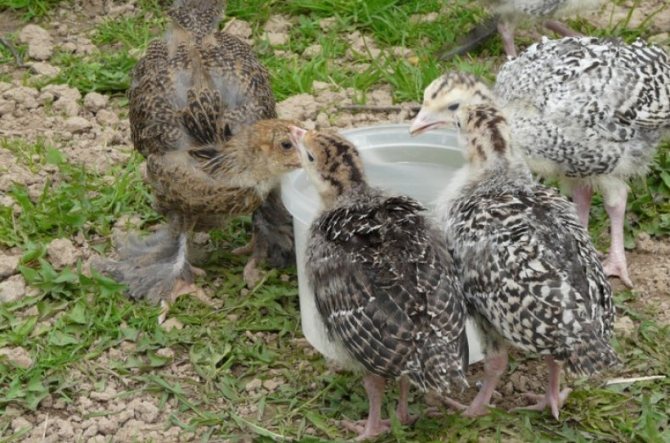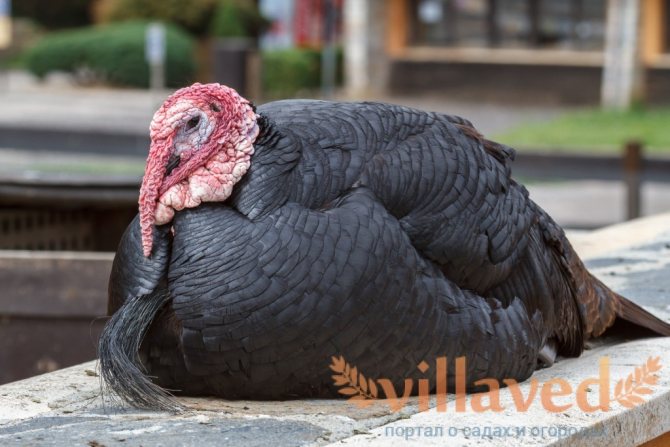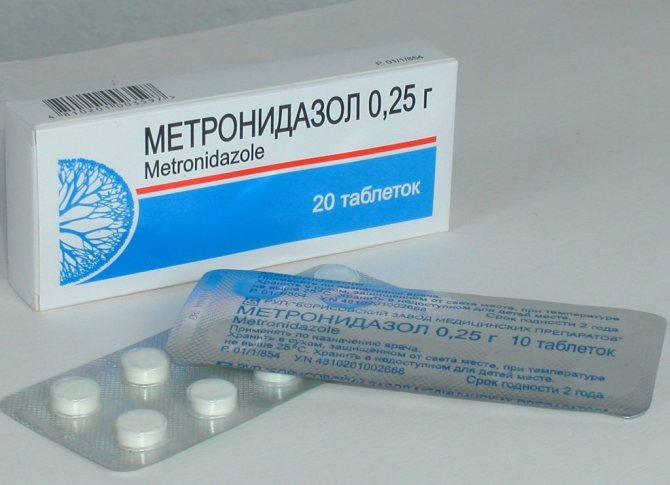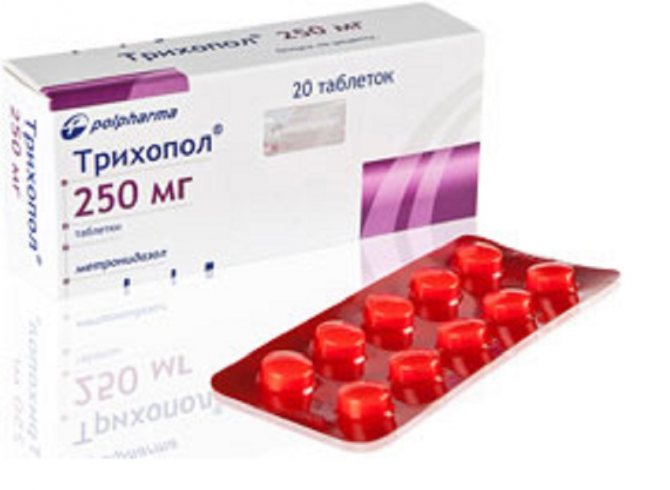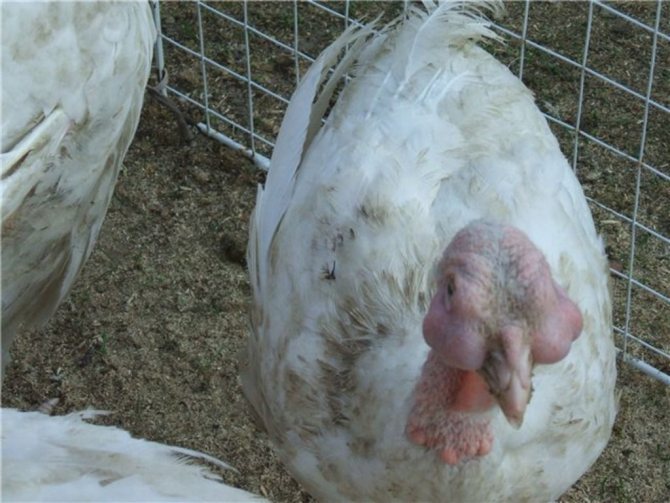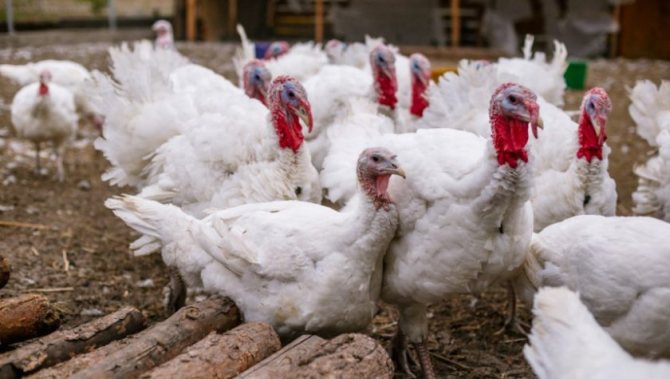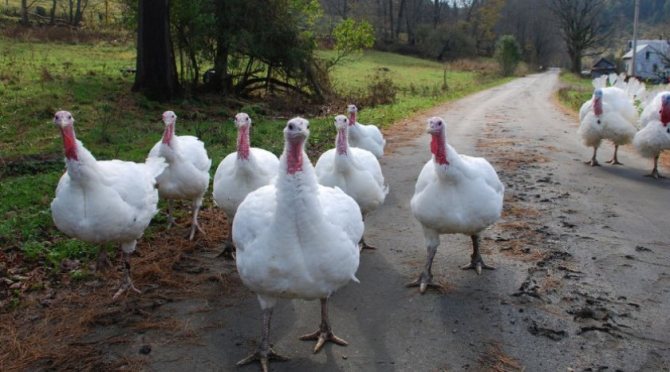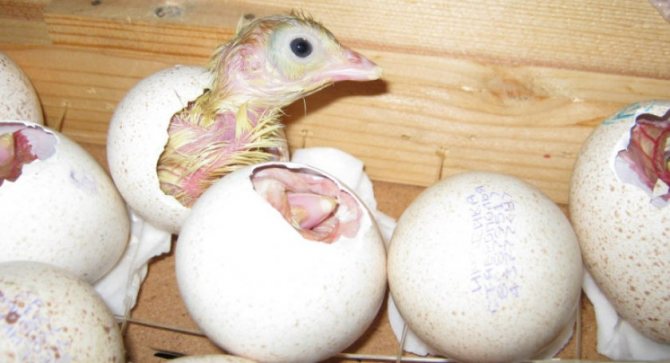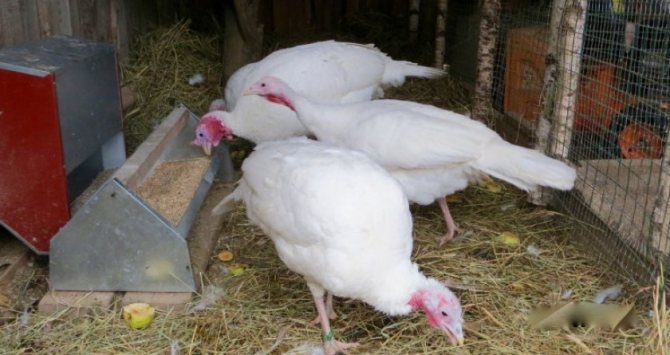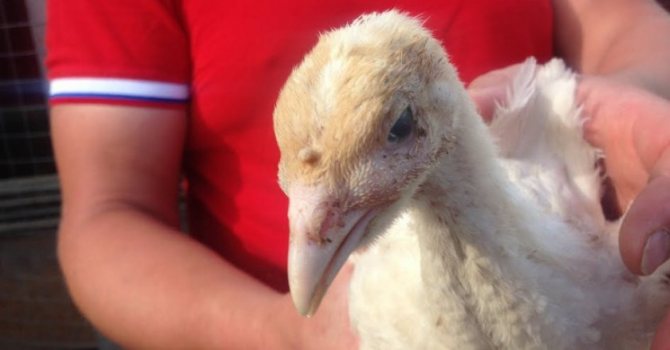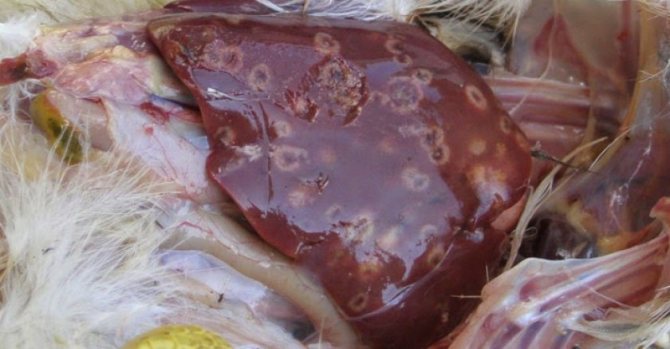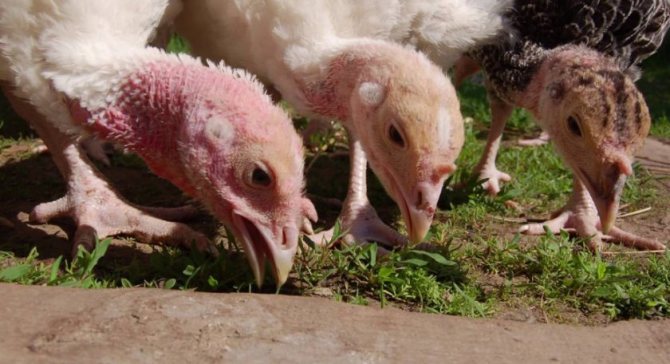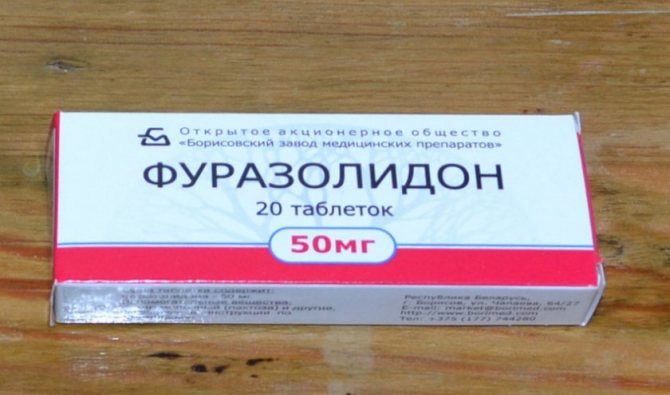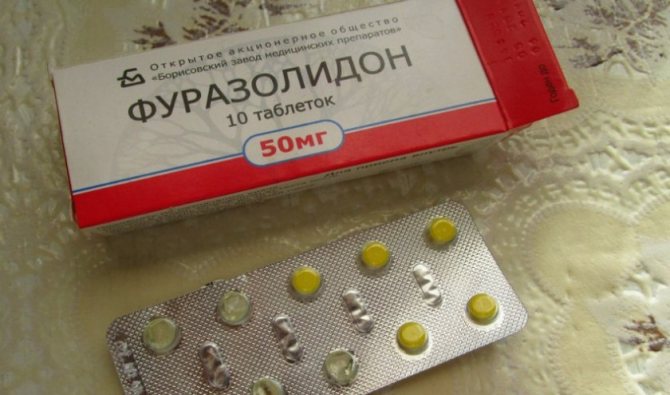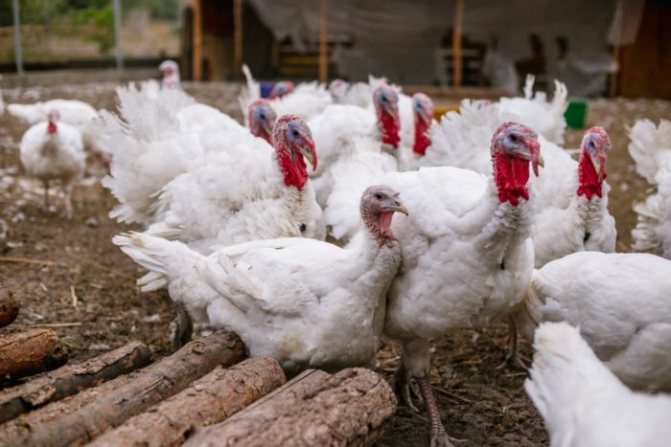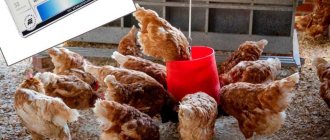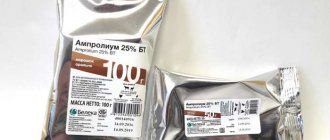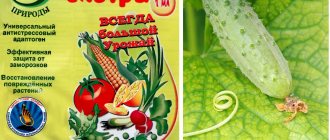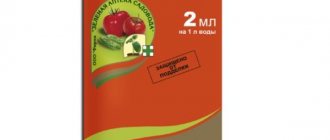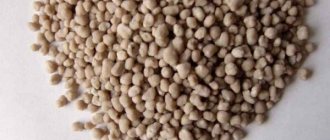»Poultry» Turkeys »Metronidazole for turkeys - application rules
0
10
Article rating
Metronidazole is used for the treatment and prevention of infectious and parasitic diseases leading to mass mortality of poultry, including turkeys. The drug, included in the group of antibiotics, helps to protect young animals from pathogenic microorganisms and is effective against histomonosis, coccidiosis and other common diseases.
Metronidazole for turkeys - rules of use
Description of the drug Metronidazole
Metronidazole is an antiprotozoal and antibacterial drug that acts against protozoa and anaerobic bacteria. The medicine is widely used to treat bird diseases caused by the above microorganisms. It is produced in a synthetic way, it looks like a light powder.
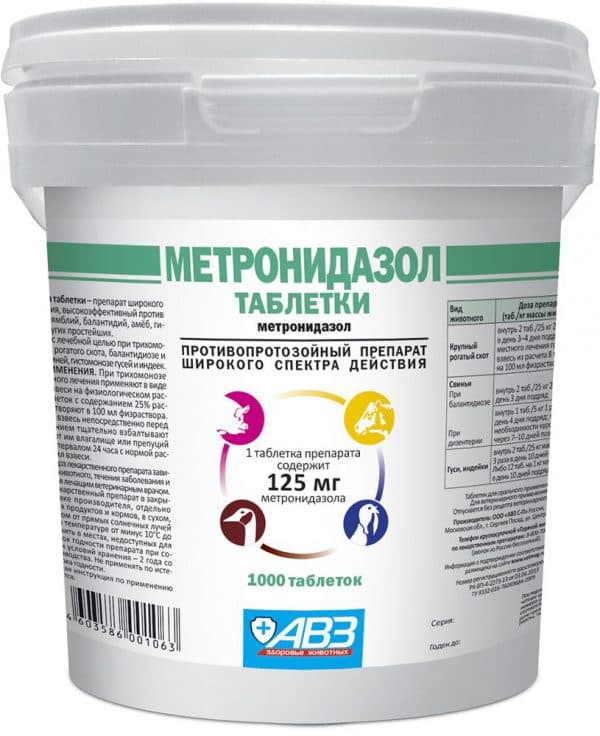
Metronidazole, entering the body, quickly destroys the cells of bacteria and protozoa, without affecting healthy cells. The drug also enters the bloodstream, nervous tissue, accumulates in the liver. The period of excretion in urine and feces is two days.
Metronidazole, suitable for the treatment of turkey poults, can be supplied as:
- tablets in plastic packaging, 250 or 1000 pieces;
- granules in bags of 250, 500 and 1000 g.
A tablet weighing 0.5 g contains 250 mg of active ingredient.
The drug is used not only for internal, but also for external use: treatment of wounds, skin lesions.
Read about full care of turkeys from the first hours.
The versatile rescuer for turkey diseases
A turkey is a subspecies of the order of large chicken individuals, therefore it is susceptible to the same diseases as its relatives. There are also diseases such as pullorosis, from which turkeys die en masse, and other members of the bird family are easily tolerated. In order to prevent diseases, it is important:
- carefully follow the requirements established by veterinarians, sanitary rules for feeding and ensuring the vital activity of turkeys;
- to settle chicks and adult turkeys (potential carriers of any infection) in the allotted time;
- neglect of the permissible number of turkeys in a confined space entails irreversible consequences;
- adhere to the recommendations for the temperature and humidity conditions in the room according to the age and breed of turkeys;
- be sure to try to include in the diet food rich in protein and fiber, vitamins, trace elements and minerals;
- take timely measures to prevent diseases (vaccinations, etc.).
Fighting an ongoing epidemic is more difficult than preventing it. The evolution in the world of treatment is noticeable not only for people, but also for our smaller relatives. It is important for farmers and poultry houses to own antibiotics for turkeys with a preventive and curative mission. Furazolidone is used when found in "wards":
- hepatitis of all types;
- coccidiosis;
- enteritis;
- salmonella of all types;
- balantidiosis, colibacillosis, dysbiosis, dysentery (bacillary type);
- diarrhea of infectious origin;
- giardiasis, cystitis, paratyphoid fever;
- infected wounds and burns.
Furazolidone for turkeys is a medicine that belongs to the group of bacterial antibiotics and has an antimicrobial effect on bacteria of the gram-negative and gram-positive groups, Trichomonas and coccidia. The positive aspect of this remedy is that pathogens very slowly produce antibodies to the drug, and the drug itself is less toxic than other drugs in this group. The ability to destroy bacteria that are resistant to antibiotics is observed.
Instructions for use for turkey poults
Keeping turkey poults implies high requirements for the hygiene of turkey poults - keeping warm, clean and dry, light conditions, and the quality of feeding the poults. However, even in good conditions, chicks are not immune from infectious contamination.
Read about how to feed quails in this material.
The drug Metronidazole copes with such poultry diseases as:
- histomonosis;
- coccidiosis;
- trichomoniasis;
- tuberculosis.
These infections not only weaken the body of the bird, but can also infect a person in contact with meat products. Parasitic diseases are contagious, and if you do not want to lose livestock, turkey poults should be prophylactically soldered with metronidazole.
Read about Bronze North Caucasian turkeys in this article.
Sanitary and hygienic rules
When treating poultry with metronidazole, in order to increase the effectiveness of the therapy, the basic rules should be followed, which include:
- regular cleaning, ventilation and disinfection of the poultry house where sick individuals are kept;
- maintaining the temperature regime at a level not lower than 18 ° С for adult birds and 25 ° С for newborn turkeys;
- limiting contact of turkeys with other pets;
- keeping young stock separately from the adult livestock;
- isolation of individuals in which there is a deterioration in general condition;
- the use of concomitant medications for rehabilitation therapy in order to neutralize the negative effects on the bird's body during treatment with drugs from the group of antibiotics;
- providing turkeys with a balanced diet with the obligatory inclusion of vitamin and mineral complexes in the feed ration.
How to give and drink: dosages for turkeys
Turkey poults are given medicine from the first day and for the first 5 days. Usually Metronidazole is added to the chick drinker.
Instructions on how to drink turkey poults are as follows:
- Water chicks with Metronidazole solution, calculating the active ingredient in a dosage of 10 mg per kilogram of live weight of the bird 3 times a day.
- Add the medicine to water or mash. At a time, take 1.5 g of metronidazole powder per 1 kg of feed (or 3 g of powder of the drug per 5 l of water).
The second method is used more often when treating turkey poults. Treatment lasts an average of 10 days. The dosage in some cases reaches 20 mg per 1 kg of body weight, with a course of treatment no more than 2-5 days. A repeated course of treatment, if necessary, is carried out not earlier than after maintaining an interval of 7-10 days.
Recommendations for use:
- Sometimes it is more effective to give the drug with feed, since it is poorly soluble in water.
- Metronidazole tablets should be thoroughly ground into powder.
- To dissolve the drug, use boiled settled water.
- For small chicks, the drug is instilled into the beak from a pipette.


At 20 days of age, Metronidazole is prophylactically given to turkey poults against a disease such as histomonosis - painful emaciation
How to solder for histomonosis
Histomoniasis is a dangerous disease in turkey poults, affecting chicks, as a rule, from 20 days to three months of age. Histomoniasis rarely affects adult birds.
Signs of histomonosis in turkey poults:
- decreased appetite;
- lethargy and inactivity;
- dirty and crumpled feathers,
- lowered wings;
- yellow diarrhea;
- sometimes - blue skin of the head.
Treatment is carried out in the following way: the drug is mixed with feed.
The norm of Metronidazole for turkey poults is 25 mg per kilogram of live weight. The drug must be given to chicks for 1 week.
Metronidazole is effective for both treatment and prevention of the first signs of illness.
The dosage for the prevention of the disease is slightly different: 20 mg per 1 kg of chick weight for 3-5 days.
In the "tablet" equivalent, the dose will look like this:
- turkey poults from 20-25 days of age - 1/4 tablets of Metronidazole;
- from 45-50 days - ½ tablet,
- 70-75 days - 1 whole tablet.
- until the age of 150 days, 1 tablet is given every 20 days.
Doses for coccidiosis
Coccidiosis is a disease that affects the digestive system of young chicks. Coccidia poults are infected through food. Parasites multiply rapidly in the body and cause serious harm to the intestines and liver. The disease in chicks usually begins in an acute form. Symptoms of coccidiosis to be aware of:
- the chick refuses to eat;
- lethargy, drowsiness;
- diarrhea in turkey poults mixed with blood;
- dehydration of the body, chicks drink more often;
- birds are freezing, gather in small groups;
- feathers fall off and ruffle;
- chicks fall, paralysis is observed.
Read about what to do if turkey poults' legs are scattered here.
To prevent the disease, the drug is given to turkeys every 2 weeks for 5 days, up to the age of 1.5 months. Drug dosage: 20-25 mg per 1 kg of bird weight.
How to drink with trichomoniasis
Trichomoniasis is a disease caused by the flagellate protozoa Trichomonas. Most often, turkey poults of 20–120 days of age get sick. Infection occurs through water and feed. Trichomoniasis also affects the digestive system and the liver of the chicks. There is a decrease in weight, lethargy of birds.
In adult turkeys, the disease is chronic. It is not recommended to keep turkey poults with adult poultry to prevent infection.
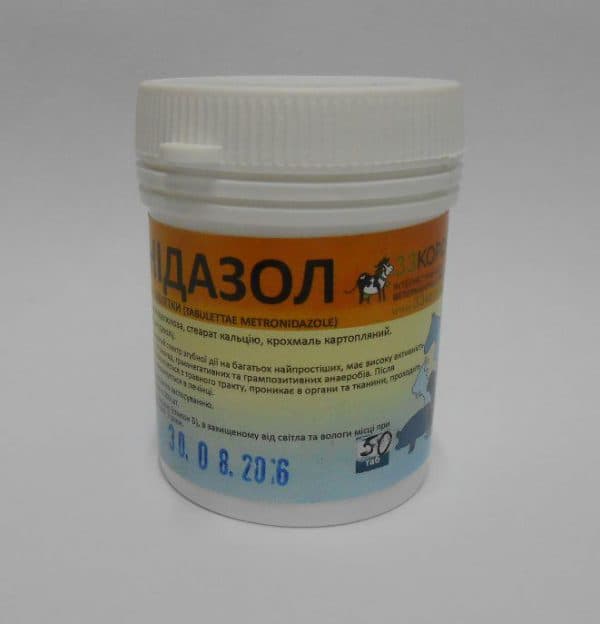

When turkey poults are infected with Trichomonas, the drug is used both internally and externally, by treatment with a 0.1% solution.
The dosage of Metronidazole is calculated based on the weight of the bird: - 40 mg of the drug per 1 kg of body weight. The course of administration for trichomoniasis is 2-5 days.
Metronidazole tablets for sinusitis
Sinusitis, or an infectious rhinitis, is an inflammation of the mucous membranes in turkey poults. The disease occurs at the age of 3 weeks. The provoking factors are dampness in the room, lack of vitamins for turkey poults from the first days A and D, crowded keeping of birds, lack of sun walking.
Disease symptoms:
- leakage of mucus from the nasal openings;
- swelling under the eyes;
- weakening of vision, chicks do not find food;
- weight loss.
Pathogens with mucus are transmitted through water, food, bedding. The best means of struggle is prevention, in advanced cases, drugs Pharmazin, Tilan are also used, mechanical removal of pus from the cavities. It is advisable to transfer diseased chicks from healthy chicks to a separate room, since they are carriers of bacteria even after a time after treatment.
With tuberculosis
Unfortunately, there is no treatment for tuberculosis in turkeys. Having found a sick bird, it is slaughtered, the livestock is transferred to another room, and the poultry house is subjected to prolonged ventilation or disinfection.
Read about brooders for turkey poults here.
Side effects
Side effects are not pronounced. With a slight excess of the dosage, no changes in the general condition of the bird were found. In some cases, allergic reactions are observed caused by individual intolerance to the active substance, decreased appetite in poultry, increased excitability of individual turkeys.
With especially long-term use of the drug in connection with the ongoing disturbances in the microflora, it is possible for young animals to develop a disease of fungal etiology - candidomycosis, which provokes damage to the mucous membranes.
The main active ingredient loses its properties if the storage rules are not followed and the shelf life expires. It is necessary to store the medication in a dark place at temperatures up to 25 ° C for 3 years from the date of release.
We are buying medicine for the first aid kit!
Coming to a pharmacy or veterinary hospital, you can see that furazolidone is available in two forms. The drug can be found in powder form, as well as in capsule and rammed tablets.
The dosage and instructions for use are in the packaging of each drug, but it can also be found in the public domain on the Internet. When purchasing furazolidone, you should know that one tablet contains zero point five hundredths of a gram. Based on this amount, the dosage rate should be calculated for each individual separately, or for the entire flock together.
If you are going to use furazolidone, it is important to remember that the active substance can neutralize boiling. Therefore, it is not recommended to dissolve tablets and powder in hot water when steaming feed.
About
Construction site
Unfortunately, turkey poults, like any other small bird, are susceptible to various diseases. Therefore, when growing turkey poults at home, you always need to be on the lookout, preventive measures and vaccinations will contribute to the health of your livestock! So, turkey poultry diseases - signs and their treatment will be dealt with by us today with special care.
Turkey poults are considered one of the most demanding and vulnerable birds. On non-observance of the norms and rules of growing, babies almost immediately react with a worsening of their condition and diseases. Very often, various diseases prevent a breeder from raising a high-quality livestock. Further on in the video, you can see how a sick turkey looks like in comparison with its healthy relatives.
Furazolidone for chickens


When planning to breed poultry, broiler chickens, it is very important to create optimal conditions for keeping, think over the diet of feathered wards. In addition, poultry farmers should understand that throughout their lives, chicks, adult chickens can become infected with dangerous endoparasites, bacteria, viruses that provoke diseases of various etiology and genesis. In order to prevent infection of the chicken herd with viral-bacterial, invasive diseases, as well as in case of infection, antibacterial agents of systemic, complex action are used in therapeutic therapy. For example, Furazolidone for chickens can be called a fairly effective veterinary medicine.
When to use
How long to water the birds with "Furazolidone" - largely depends on the intensity of the disease and the type of bacteria that cause it.
The medicine is used in the following cases:
- hepatitis;
- giardiasis;
- coccidiosis;
- salmonellosis;
- paratyphoid;
- infectious diarrhea;
- bacillary dysentery or pullorosis;
- staphylococcal septicemia;
- respiratory mycoplasmosis.
To help as quickly as possible and to save the livestock, you need to be able to clearly identify the symptoms. Most diseases are identified by autopsy.
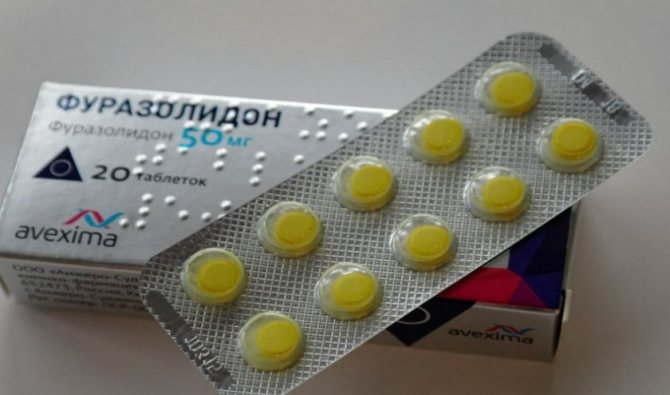

Hepatitis
Incubation 2–7 days.
The main symptoms are:
- decreased or complete lack of appetite;
- blue discoloration of the scalp;
- sudden death of birds without manifestations;
- decrease in egg production and hatchability of turkeys.
Determined by symptoms, analysis of discharge from the anus and dissection. Pathological analysis shows an increase in the liver by 1.5 times.Numerous hemorrhages and necrotic foci of an elliptical shape with uneven edges are noted over the entire surface of the liver.
The gallbladder is also enlarged, filled with a liquid of almost black color. The pancreas is enlarged, covered with pink-gray lesions. The spleen can be enlarged or, on the contrary, reduced.
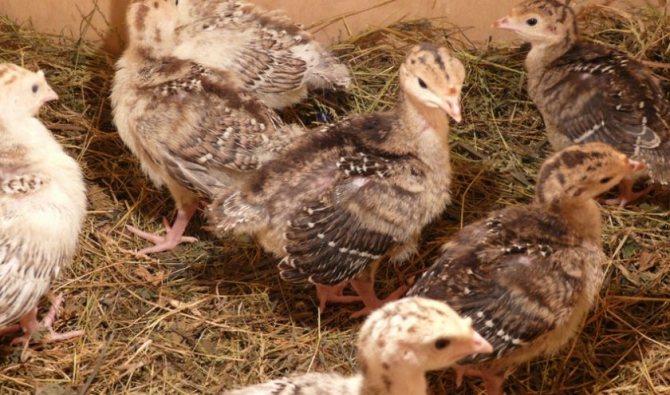

Giardiasis
The main symptoms of giardiasis are:
- upset stool;
- liquid greenish-red droppings;
- growth retardation;
- sharp weight loss while maintaining appetite.
It is determined symptomatically, on the basis of stool analyzes and postmortem examination. In the context of the liver and intestines, the parasites themselves are determined. Characterized by the presence of through holes in the tissues of various organs (liver, lungs, etc.), depending on the focus, in which the highest concentration of parasites.
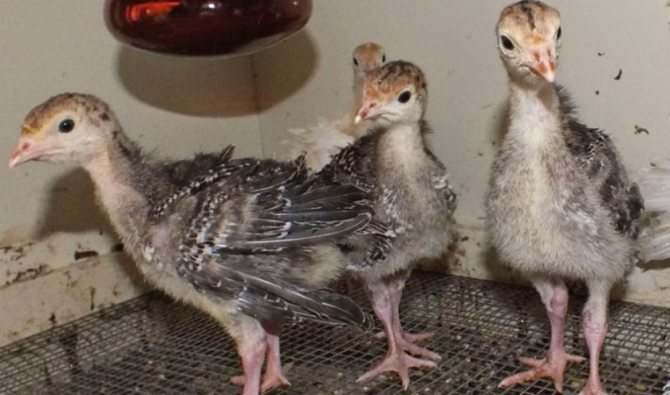

Coccidiosis
The disease is most often identified in chicks. After infection, the first manifestations are noted already on the 7th day.
The main symptoms are:
- lack of appetite;
- crowding of birds;
- inhibition of activity, drowsiness;
- tousled down;
- intense thirst;
- diarrhea with blood.
Negative Factors of Using Antibacterial Treatment
Negative factors appear with prolonged use and in a large dosage of the drug. Therefore, in order to avoid neurosonephritis, polyneuritis, toxic liver dystrophy, diarrhea, dysbacteriosis, decreased appetite and glucose indicators, as well as an allergic reaction in an animal, strictly follow the recommendations for the treatment regimen (what and how much to give). In the spring, when the turkeys are weakened, as well as during pregnancy, Furazolidone is not prescribed.
During treatment with Furazolidone, the poultry farmer should remember the time of withdrawal of the drug from the bird's body. Processing turkeys for meat is allowed no earlier than 4 days after the last use of the drug. The meat of turkeys, which farmers were forced to kill before the expiration of the specified period, is used as feed for fur animals or in the production of meat and bone meal.
Today turkey farms are becoming more and more popular. But at the same time, any farmer who is engaged in growing turkeys will say that it takes a lot of effort and energy to grow a large, fleshy and healthy individual. Due to the mutation of pathogenic bacteria, turkeys are susceptible to strains and variations of viruses and diseases that are dangerous, both for an individual individual and for the entire livestock. In order not to lose a valuable product and not waste energy, materials and finances, every poultry house is simply obliged to have an assortment of different medicines in the first-aid kit, in particular Furazolidone, to provide immediate assistance to the animal.
Signs of a weak individual
Every farmer should be able to distinguish between healthy and withering individuals in time. If you pay enough attention to your herd, this will not be difficult. It is enough to know the main signs of a sick bird:
- there is a sharp decrease in the activity of the animal - the bird tries to sit as much as possible, rarely gets up, often falls;
- the individual avoids the other members of the pack, hides in distant corners, tries to remain unnoticed;
- the plumage loses its smoothness and shine, it is disheveled;
- the look is extinct or, conversely, a painful shine in the eyes, sunken eye sockets;
- the corners of the wings are down, the animal staggers when walking.
These signs can be classified as general. The disease can be diagnosed by individual characteristics.
For what diseases is it used
This drug is effective for the following diseases:
- urethritis;
- enterocolitis;
- enteritis;
- balantidiosis;
- colibacillosis;
- bacillary dysentery;
- infectious diarrhea.
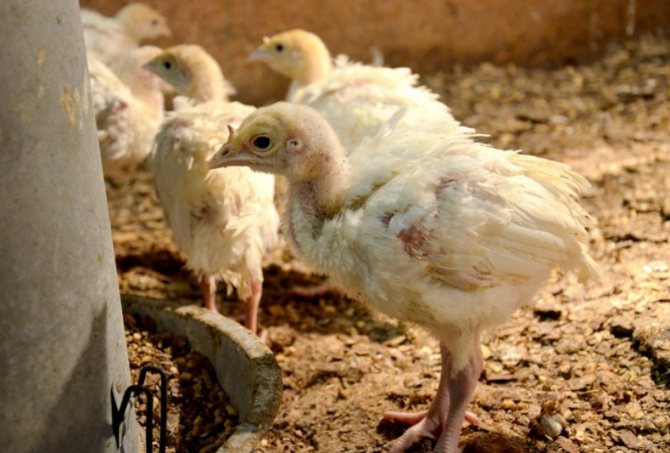

In addition, "Furazolidone" is used to treat wounds and burns affected by infections, and other infectious and bacterial diseases. It can also be used to prevent the aforementioned diseases.



